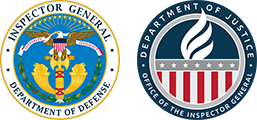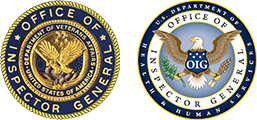Key Insights: Health Care Staffing Shortages
The COVID-19 pandemic put an unprecedented strain on our health care system. We surveyed more than 300 facilities across four federal health care programs to see if they had enough medical staff during the pandemic.
We surveyed the following facilities:
- Department of Defense (DOD) medical treatment facilities
- Federal Bureau of Prisons institutions
- Veterans Health Administration facilities
- Medicare– and Medicaid–certified nursing homes
Staffing shortages were reported across federal health care facilities.
A lack of nurses and medical officers was the most reported staffing shortage. In fact, 94% of the nursing homes we surveyed reported a nursing shortage during the pandemic. The graph shows other federal health care facilities we surveyed reported similar nursing shortages.
| Contributing Factor | DOD Medical Treatment Facilities | Bureau of Prisons Institutions | VHA Facilities | Medicare– and Medicaid–Certified Nursing Homes |
|---|---|---|---|---|
| Limited Labor Pool |
Image
|
Image
|
Image
|
Image
|
| Noncompetitive Pay |
Image
|
Image
|
Image
|
Image
|
| COVID-19 Requirements |
Image
|
Image
|
Image
|
|
| Challenging Hiring Process |
Image
|
Image
|
Image
|
The pandemic made it more difficult to maintain staffing.
Although shortages existed before the pandemic, they became worse during the crisis. Many facilities struggled to maintain adequate staffing because employees were exposed to COVID-19 and were required to quarantine - in some cases, for up to two weeks.
Officials from 33 nursing homes said some staff quit their jobs because they didn’t want to contract COVID-19 and potentially expose family members.
Lack of staff affected patient satisfaction and employees’ mental health. It also cost agencies money.
An estimated 80% of federal prisoners rated the Department of Justice’s Bureau of Prisons' medical care as “poor” during the pandemic. Meanwhile, the agency had to pay its staff more than $15 million in overtime during the first year of the pandemic – a 64% increase from the prior year.
Working in high-stress environments took an emotional toll on employees across the four programs we reviewed. Some reported either an increase in anxiety, depression, and/or burnout.
Federal facilities had a hard time competing with the private sector for employees.
Officials at one Department of Defense military hospital said that the private sector offered $33,000 more annually than the federal government for a similar nursing job in the same community.
To maintain staffing, some federal health care programs offered bonuses, retention pay, student loan repayment, and flexible work hours.
Congress helped, too. The Consolidated Appropriations Act, 2022, increased the amount of pay for certain health care professions within the Veterans Health Administration.



